Happy Monday everyone — and day 5 of New York City Fashion Week!
You know what they say about fashion: “What goes around, comes around.” Not only is the popular quip the name of a great vintage store in downtown NYC, but it illustrates that whatever we see on the runway for NYFW 2011 is a reflection of eras, styles and experiences of the past. We all strive to be original, but originality has its origins somewhere. These origins are usually rooted in the likes of what we’ve seen and experienced in our lives and the lives of others, especially those who have come — and created — before us.
I can’t speak to the direct inspiration of fashion designers for the fall 2011 ready-to-wear lines of the designers represented at the tents this week. But what I can speak to are my thoughts on where their inspiration may have come from circa the past. Whether they were conscious of this or not, we’ll never know unless they specifically speak to it. Yet considering that so much of our creation today could not happen without the creations of yesterday, it’s not out of line to glean small truths and connections to how vintage fashion continues to influence contemporary design.
Yesterday I reviewed shows from Thursday, Friday & Saturday thanks to images available on Style.com. With multiple clicks of my mouse, I noticed some direct correlations between the runway looks and what are now considered retro trends.
Keep reading after the jump to see the runway vs. retro picture-by-picture breakdown of the Fashion Week 2011 vintage style inspiration conclusions I discovered — and what come next fall you’ll be wearing as inspired by eras past.
So like I said … what goes around, comes around. And what we wear today? It might also be what we wear tomorrow — not 100 percent original, but always 100 percent YOU. Check back in tomorrow for some very special, very vintage YouTube videos on runway shows from the 80s vs runway shows of today! I’m scouring the ‘tube to find the classics for some compare/contrast fun. Get ready, and remember you can stream NYFW LIVE anytime this week!
Feel like you’re missing out on NYC Fashion Week? NO WORRIES! I’ve been skipping the tents to watch from the relaxation of my apartment thanks to YouTube’s “Live Runway” channel where you can stream the runway — LIVE! — for free. No more pushing & shoving or sucking up to get better seats at shows. Enjoy and have great days lovelies!
xx, SD
UNITED BAMBOO // ’60s NAVY SWING COATS
COMPARE/CONTRAST: The epitomized swing coat of the ’60s swung itself back onto the runway at the United Bamboo show. The designer look has muted buttons and is a darker shade of blue than it’s of-the-real-deal ’60s counterpart, right, but the similarities of design and structure are spot on. These two coats could be sisters … only 50 years age difference between them!
HOW TO WEAR: Pairing a swing coat with heavy, knitted wool tights and ankle high boots is a warm, sexy way to strut into fall.
BAND OF OUTSIDERS // ’70s PONCHOS
COMPARE/CONTRAST: The poncho of yesterday has gotten longer, but still kept its characteristic “I’m-wearing-this-only-to-cover-up-sexiness-below” appeal. The designer look by Band of Outsiders is an elongated “dress” version of the very popular crocheted — oftentimes with fringe — poncho of the ’70s. While the poncho of 40 years earlier may have been a style accessory, the poncho of 2011 appears to be a more a cold-weather substitution to the oh-so-overdone coat … or, a stand alone piece that wows and wonders.
HOW TO WEAR: Wear ponchos, no matter the length, over a lightweight top to prevent unnecessary bulking and the creation of oh-so-not-very-flattering lines. I’m personally a fan of muted ponchos to avoid looking like you’re mis-wearing a trend. Think solid classics like blacks, grays, whites, beige and brown. Pair a poncho with streamlined work pants in the same color family and you’ve got yourself a classy and cold-weather-friendly look.
JILL STUART // ’70s ASCOT *SECRETARY* BLOUSES
COMPARE/CONTRAST: Like the contemporary poncho, the “ascot” of the working girl’s “blouse” has fallen to the floor like an elephant’s trunk. The Jill Stuart version carries the popular geometric print design of the ’70s, and the ascot is designed more like a scarf than a female-version of the tie, which is what it was originally intended to be. A friend’s mother explained to me once that the ascot’s popularity grew as more women became independent employees of the American workforce. While many were still in secretarial positions [hence the nickname “secretary” blouse] others were quickly moving up the ladder in law, education and medicine. The ascot’s prominence during the era represented opportunity for women and their careers.
HOW TO WEAR: The ascot blouse, whether vintage or not, looks great under a fitted, buttoned blazer. You can let the ascot hang like a tie or delicately tie a bow for some feminine neck design. The ascot can also be tucked into your blouse itself — let it puff up a little bit so it “pops” from below the buttons. This may take some adjusting, or use a sparkly pin to secure it in place.
LIBERTINE // PUFF *CIRCUS* SLEEVES
COMPARE/CONTRAST: I recently found this yellow puff-sleeve cropped pull over [above] at the Manhattan Vintage Show. The booth’s curator, Cherry Vintage, told me it was probably circa 1920s, and a piece used for costuming at a circus or a show. The “puff sleeves” remind me of a jester’s uniform — and we all know how jesters were [sometimes] successful entertainers in the royal court. The Libertine puff sleeve top is much more practical to wear for-the-everyday than the vintage counterpart I’m seen wearing here. Like the tulip skirt trend of a few years ago, I predict that these jester-esque puff sleeves will carry over into future seasons as a must-have trend.
HOW TO WEAR: When adding volume on top, aim to have the least amount of volume on the bottom, i.e. wear a puff sleeve top or blazer with skinny jeans or a fitted pencil skirt and pointy, angular toe and thin-heel pumps. Avoid boots — even ankle boots. You want the entire look to PUFF! and then … SLIM! The puffy sleeve look will rock on just about anyone, as long as you keep your bottom slender and minimized.
RUFFIAN // VICTORIAN *RUFF* COLLARS
COMPARE/CONTRAST: The neck “ruff” [not to be confused with shirt cuffs] were most popular during the reign of Queen Elizabeth I of England, elevated and expanded [literally — keep reading to learn how] to highest popularity between 1570 and 1600. The ruff’s popularity faded soon after James I took the throne in 1603. The ruff of the Elizabethan era was the equivalent of the diamond ring of today. The bigger, the bolder, the more bling-bling … the better, i.e., the more fame/fortune/regal authority you owned, and had the right to flaunt like a peacock.
Note the ruff seen on the model for Ruffian. It’s quite small in comparison to the picture to the right — ironically, the model’s ruff is actually more fitting for a person of the lower class in the Elizabethan era. Ruffian must be selling its designer fashion to the middle classes then, no?
HOW TO WEAR: Before seeing a broadway show called Bloody Bloody Andrew Jackson last fall, I was inspired to do some style research on the show’s costuming and found this beautiful contemporary ribbon & lace ruff for sale on Etsy. Wear your own version of a ruff with decorative scarves or larger-than-normal collars. Add layers of necklaces [try multiple single strand pearls] on top of a high-neck sweater. The ruff you see from Ruffian [ha!] is atypical for modern-day wear — although I never discourage anyone from wearing what makes them feel great. Just make sure you’re promoting the right “blinged out” ruff … or you may be misrepresenting your social class!
RAG & BONE // TARTAN SCOTTISH *MAN SKIRT* KILTS
COMPARE/CONTRAST: Mel Gibson isn’t the only hot gent who can get away with wearing a skirt and not be called a sissy. Apparently the lovely model boys of Rag & Bone can pull off the look, too, only updated and with less tartan and more toughness. The expectations of male/female style are continuously changing, and like women have adapted style elements from their male counterpart’s wardrobe, the vice versa is definitely slated to occur next. So calling all girls with younger brothers: Hide your skirts while you still can.
HOW TO WEAR: Rag & Bone paired the Scottish clan-inspired kilts with rugged walking boots below and some seriously preppy pretty above. The look doesn’t focus in on the skirt, so you almost have to give the model a double take just to see if you can spot the skirt. All men looking to channel this style on their own: channel it exactly as you see here. De-emphasize the skirt, and emphasize a well put-together outfit. That way, people’s disbelief that you’re actually wearing a skirt will be in pure, admiring awe.
UNITED BAMBOO // GRANDPA SWEATERS

COMPARE/CONTRAST: The “Grandpa” sweater of eras past was just that: a waist-length or longer wool knit sweater, usually in a starchy red, green, grey or brown color, complete with hand pockets and a waist tie. Your grandfather had ’em, my grandfather had ’em, and now … all the cool girls have ’em. I guess all of our grandfathers had special places in their hearts to pass them down to us, huh?
HOW TO WEAR: The same can be said for designers behind United Bamboo — they were clearly inspired by the old and wise in their life, but they’ve modernized the Grandpa sweater into something far greater. The red cord knit on the model is less Grandpa because of it’s deep V neck and the double breasted black buttons. The deep V neck allows for a pop of color — or nothing at all — to show from underneath, adding to the contemporary allure of what is ironically inspired by the senior citizen set.
Wear a designer or thrifted vintage Grandpa sweater with black pleather tights and knee high boots to give it a comfortable “oomph.” Who said you couldn’t be comfy AND sexy?
RAG & BONE // BOWLER *EVERYMAN* HATS
COMPARE/CONTRAST: The bowler, or “derby” hat, was invented as a “hard hat for riding” around 1850. It’s popularity among the classes grew through the 1920s, with everyone from the shoe shine boy to the banker to the detective, doctor, lawyer and mayor wearing a derby. Prior to the derby, a gentleman wore a hat to publicize his rank in society — a top hat, for example, were worn by the wealthy while “cloth hats” worn by young street boys.
So the derby was a class unifier in the sense that men [and fashionably charged women!] from all social classes never left their homes without a good ‘ole fashioned derby on. While I can’t be certain because it requires some more research on my part, it seems like the bowler was the first sign that “clothing did not make the man,” and that the great American dream could honestly be achieved without dressing the part. In other words, the streets were paved with gold … not your outfit.
HOW TO WEAR: Rag & Bone boys rock derby hats on the runway in vibrant solid colors like red and white. The hats are meant to operate as a “style connector” between other elements of the look, for example, the red bowler hat model has red plaid pants, and the white bowler hat model is wearing a muted white look.
The signifying theme? Men are encouraged to match their hats to their outfits, their shoes to their belts, their watches to their belt buckles. In other words: When wearing a bowler hat, wear it with a purpose and with style consciousness. Don’t just “throw it on” to walk out the door in your jeans and a T-shirt. Respect the bowler and wear it when the rest of yoru outfit is dressed for the occasion. While the bowler was an everyday hat in the late 19th to early 20th century, the average man’s dress code doesn’t warrant wearing one everyday.

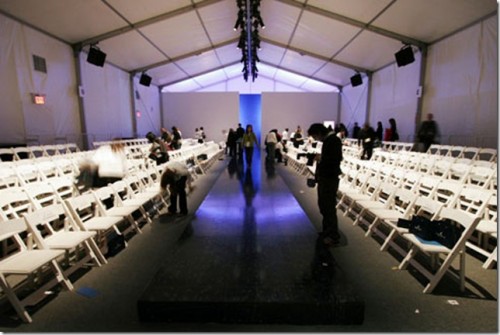
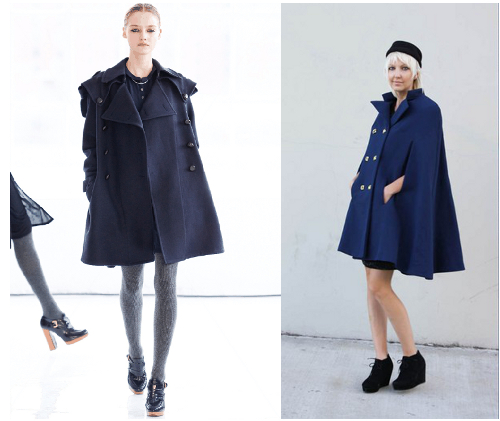
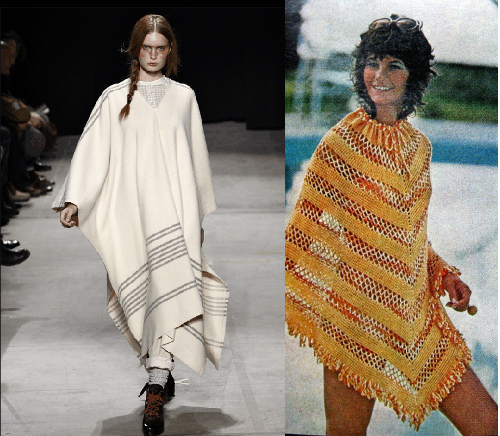
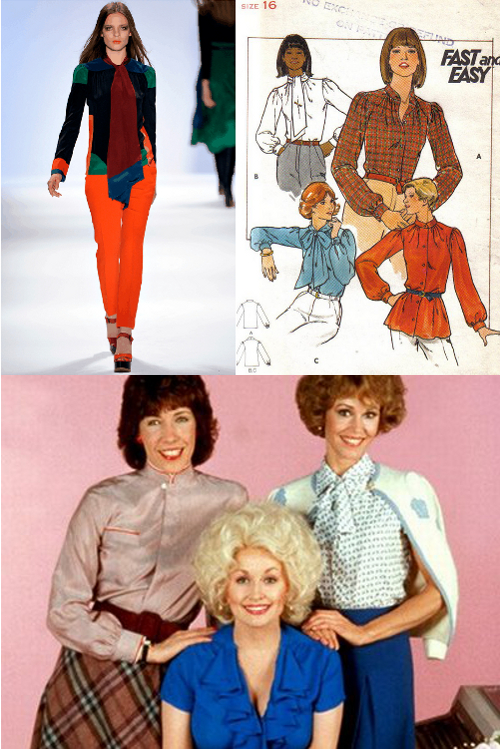
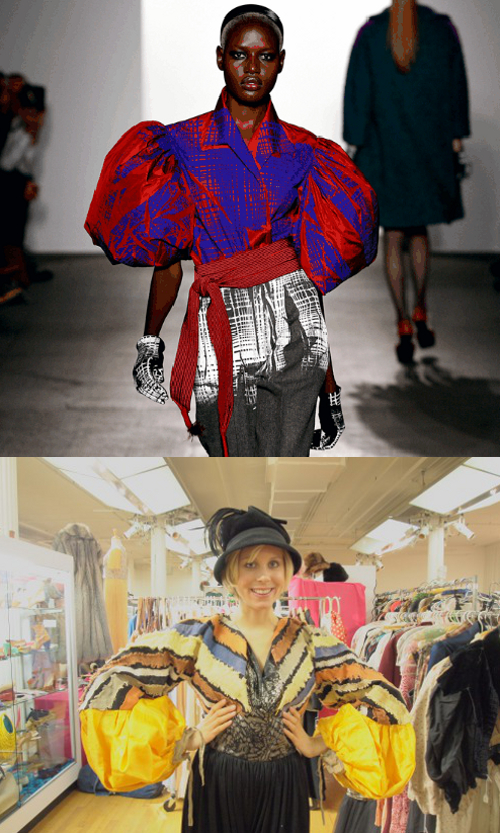
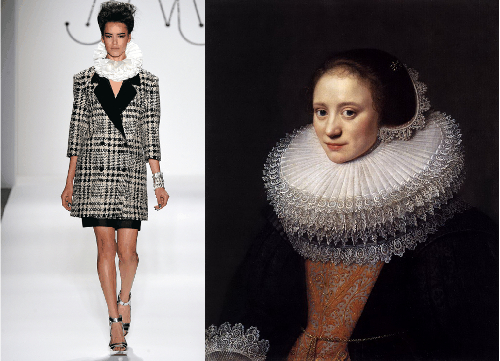
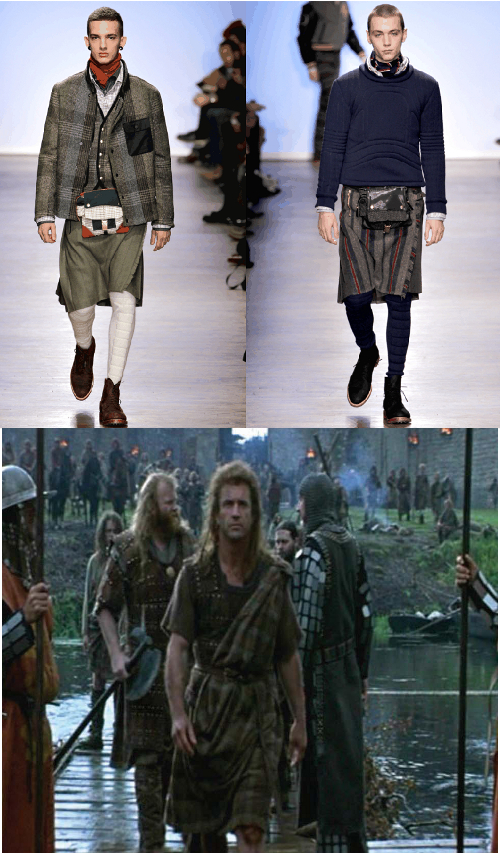
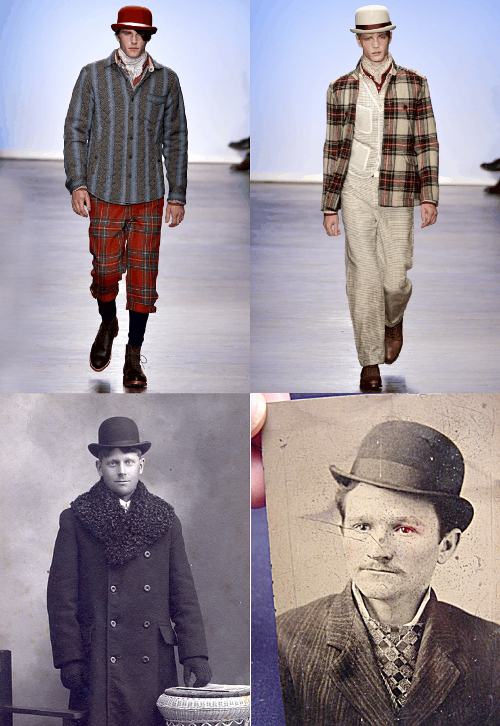
Love everything about this post. RIGHT ON!!! Lets go find the original inspirations of the trends of today!
Brande
http://victoryvintageb.blogspot.com/
http://stores.ebay.com/Victory-Vintage-Boutique